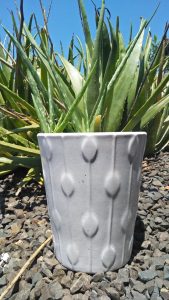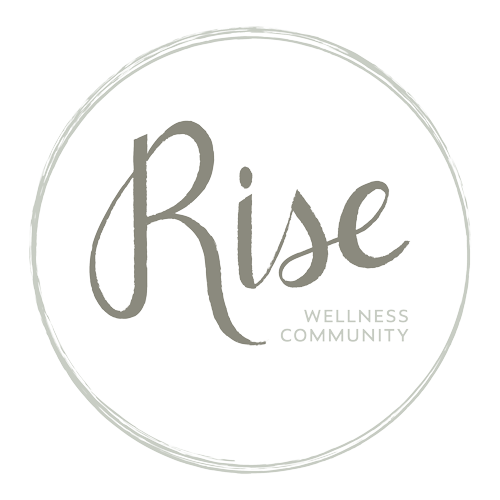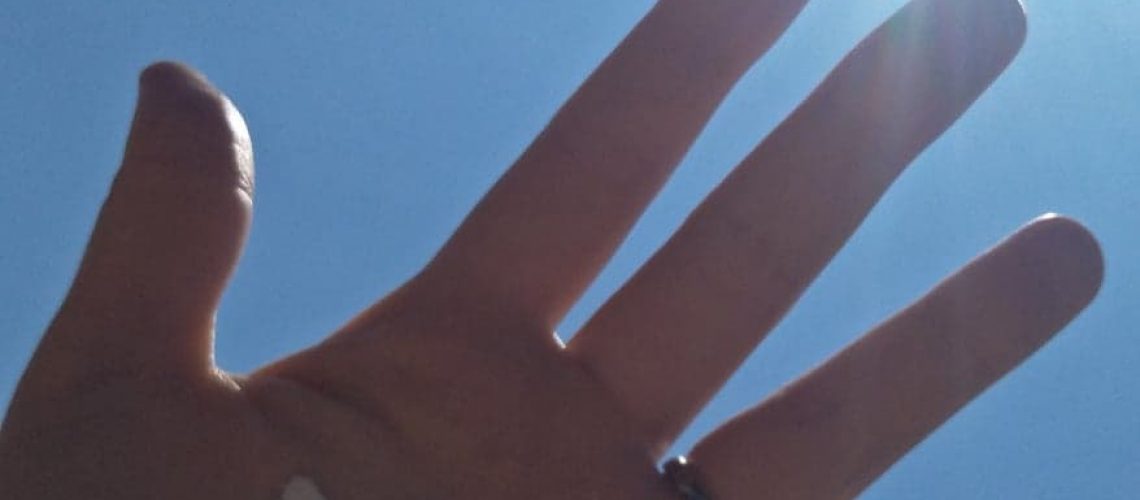Oh Sunscreen… We lather it on with good-intention but could what it’s become possibly be one of the biggest fails of our ever-evolving attempts to live well. I believe very little is absolute in the world of wellness recommendations; they are constantly changing, evolving and digressing for many reasons, both commendable reasons such as the advances in evidence-based practice as well as questionable ones, such as the agendas of those marketing the particular recommendations. Regardless of that, I am beyond positive of this; we have really stuffed up when it comes to conventional sunscreens. Why? Where to begin?!?! The ingredient list on most sunscreens is downright dirty; the nasties, the toxins, the endocrine-disrupting chemicals, many of which actually cause free radical production… Do you know what free radicals lead to? … disease and cancer. Is this really a case of cutting off our nose to spite our face? And why, oh why, are these pretty packaged tubes filled with terrible ingredients so strongly encouraged by those we should be able to trust as supposed gatekeepers for our health, such as the TGA and FDA, to be slathered all over our babies and ourselves day after day, year after year. It’s not hard to have a better ingredient list and it’s absolutely not too much to expect when it comes to making the right choices for the people we love.


Please note as you read on, I am not at all advocating for irresponsible sun exposure. I have someone I love who deals with the consequences of skin cancer regularly and it’s not a battle I would wish on anyone. But that’s even more the reason I am on my sun-screen soapbox today asking you to take a closer look at these ingredient lists and choose more wisely. Also note, I’m not coming from a place of judgement; it wasn’t too long ago I would lather up with Tropicana SPF 4 to spend days sizzling with the rest playing beach volleyball #knowbetterdobetter
Why most conventional sunscreens are bad for us:
Are you familiar with EWG.org (environmental working group)? They have an excellent third party independent safety rating resource called ‘skin deep’ which rates ingredients in some 70,000 products as well as individual ingredients for products not listed. If reading labels is a challenge for you and/or you don’t have a PhD in toxicology, chemistry & botany, then like me, you will find the EWG skin deep tool extremely helpful in a commitment to switching and ditching chemical junk.
Wellness mama site summed up the sunscreen information pulled from the EWG really well as follows:
“Of the 1,400+ sunscreens tested by the EWG, only 5% met their safety standards and over 40% were listed as potentially contributing to skin cancer.
One of the reasons [that sunscreen may actually lead to skin cancer] is that a Vitamin A derivative, retinyl palmitate, that is often used in sunscreens was shown to speed up the growth of cancerous cells by 21%.
Many sunscreens also contain methylisothiazolinone, which the American Contact Dermatitis Society named as its ‘allergen of the year’
The EWG’s most recent report listed Neutrogena as the #1 sunscreen brand to avoid, citing high concentrations of oxybenzone and other hormone disrupting chemicals, and misleading claims about their SPF levels.”
She then goes on to quote the Journal of Clinical Pharmacology and Therapeutics:
“Sunscreens protect against sunburn, but there is no evidence that they protect against basal cell carcinoma or melanoma. Problems lie in the behavior of individuals who use sunscreens to stay out longer in the sun than they otherwise would. Vitamin D inhibition is, at this stage, unlikely due to insufficient use by individuals. Safety of sunscreens is a concern, and sunscreen companies have emotionally and inaccurately promoted the use of sunscreens”.
She says “Despite the push for more awareness about sun exposure, and the advice to use sunscreen whenever we go outside, incidence of skin cancer, especially melanoma, is rising dramatically.
In fact, skin cancer rates are rising by 4.2% annually, despite the fact that we spend less time outdoors and wear more sunscreen”. This information is all cited in her article, linked at the end.
Some of the biggest offenders in most sunscreens are oxybenzone and octinoxate, both major hormone disruptors and both catastrophic to reef-life.

According to the Environmental Working Group “there are several suspected dangers associated with Oxybenzone. Despite its sun protective abilities, it has been shown to penetrate the skin and cause photo-sensitivity. As a photocarcinogen, it has demonstrated an increase in the production of harmful free radicals and an ability to attack DNA cells; for this reason, it is believed to be a contributing factor in the recent rise of Melanoma cases with sunscreen users. Some studies have shown it to behave similarly to the hormone estrogen, suggesting that it may cause breast cancer. It has also been linked to contact eczema and allergies.
If you take a moment to plug your brand and/or just some of the ingredients from your sunscreen label into the skin deep app, you might be ready to read on. https://www.ewg.org/skindeep/
Then, when you have moments like these, you don’t have to worry nearly as much over what your little one just covered themselves/taste-tested while you were in the shower.
What else?
So we’ve talked a bit about how these ingredients are impacting us as humans… but what about the other collateral damage? Our sea life and especially the reefs? The environment? Some articles floating around say that sunscreen is worse than climate change.. yikes! Just these past few weeks our local rock pools in Kiama/Gerringong NSW were all of a sudden a floating fish graveyard. I’m not sure if it’s true, but many locals suggested that due to the influx of tourists swimming, with low tides not washing out the water, the build up from sunscreen toxins create an unsustainable environment for the fish to survive.
I read a stat recently that estimated over 5,000 metric tons of sunscreen wash off of swimmers each year, whether or not that is precise is irrelevant in my book, what we do know is that it is way too much and the consequences are catastrophic. And as stated in the article linked below: “If a chemical causes bleaching, deformities and DNA damage in young corals, what’s it doing to us?” …. Read that sentence again. So why not do better??? Check out this article for more on this if interested:
What about all this talk of non-nano and nanoparticles?
Here’s the low down from mamanatural, another great wellness warrior who does tons of research & consulting before summing it all up for us to digest:
She says “because zinc oxide is so thick and pasty, many manufacturers grind down zinc oxide to nanoparticles, as these formulations rub in better and don’t leave as much of the white pasty look. Keep in mind, while particle sizes vary among manufacturers, nearly all would be considered nanomaterials under a broad definition of the term so non-nano is kinda misleading.
The US FDA has declined to weigh in on this controversial issue and does not currently define ‘nano’ or ‘non-nano.’ As a general rule, if advertised as micronized zinc oxide, you’re probably going to have a smaller particle product.
Some studies indicate that nanoparticles can harm living cells and organs, but the large number of research studies have produced no evidence that zinc oxide nanoparticles can cross the skin barrier. A real-world study tested penetration of zinc oxide particles of 19 and 110 nanometers on human volunteers who applied sunscreens twice daily for five days. Researchers found that less than 0.01 percent of the zinc from either particle size entered the bloodstream.
You also want to find a sunscreen that uses uncoated zinc oxide. Some manufacturers will use a chemically coated zinc oxide, because it’s easier to blend and work with. As more naturally-minded people, we want to find sunscreens that use uncoated zinc oxide.
In researching sunscreen brands, I liked the ones who spelled out their process and even measured their particle size. While some scientists say that smaller particles are OK, why take the risk. There are several brands out there who have measured their sunscreens and testify to larger particles, which is a bonus”…

So in short, like most things these days, there are conflicting opinions, even among the experts. Regardless, I ask you, if there is an avenue to simply just not gamble with our health or our environment, why not take it?!?!
Anything else??
Well, then there is Vitamin D. How many of you have had blood work done and were told you have low vitamin D? It’s SOOOO common these days! Vitamin D deficiency is linked to so many chronic diseases as well as many types of cancer. But I’m also not sold on supplementing with Vitamin D, because, it is by definition a hormone. Again, there is just too much conflicting information out there about whether or not supplementing with a synthetic version of this hormone is actually something our bodies benefit from. Real-deal vitamin D is the way to go in my book, as long as it’s done in a safe and responsible manner and we are eating a nutrient-dense diet to make it as bio-available as possible.
So what is the solution?
For my family, I value some unobstructed sun exposure (15 minutes or so) every single day that we are able (so basically this just leaves out the days we are flying internationally). We don’t apply sunscreen at all if we aren’t going to be directly in it for longer periods of time than that, better for us, better for the environment.
We get our sunscreen from the inside out. There is significant information that supports eating a real-food diet helps support the bodies natural mechanisms to tolerate responsible sun-exposure for healthy vitamin D build up. Healthy fats and antioxidant-rich whole-foods are part of an anti-inflammatory diet and support healthy skin. Ensuring optimal consumption of vitamin D-rich foods helps the body to reach healthy levels so it will produce more melanin to protect your skin. Summed up in the article linked below like this:
“Melanin, the dark pigment that we get when we tan, is produced to shield the skin from further UV exposure by providing a type of barrier. This is why those with darker skin need more sun that those with fairer skin to get the same amount of vitamin D.When the body has enough vitamin D, it will start producing melanin to keep from getting too much. There is evidence that optimizing vitamin D levels through sun exposure and even through supplementation will help the body produce melanin faster and retain it longer. Of course, this is a genetic and very personalized issue that is best handled with testing and the help of a qualified practitioner”.
As you can see, I have three little ones with same genes, but very different skin – I do my best to protect them all the same.

So while I’m not an expert in any field that can truly understand the science behind this notion, eating a nutrient-dense and real-food diet is ideal for so many reasons anyway, so I’ll take this theory and add it to by toolbox of better choices.
Our next line of defense is shade and/or cover up. Long sleeve rash guards, wide brimmed hats, light-weight cotton clothing – these are all so manageable and just give that little bit more protection when we might be spending more time in the sun, but still don’t need to fully lather up.
Lastly, when we do need to apply sunscreen, we choose a safe one. I DIY our own most of the time (recipe below), because it’s cost-effective and we have used it confidently for years without having any issues with burns. But I also always have a bottle or two of pre-made natural sunscreen on hand as well, especially for travel as my mason jars aren’t always ideal.
If after all that, you still manage to get a burn, avoid putting commercial ‘after-sun lotions’ on as there is evidence to suggest these just trap in the heat. Real aloe is a great alternative, check out my DIY cooling recipe here: https://intertwined.co/cool-down-potion/

My top four favourite pre-mades are:
Badger Organics: Available in Sport, Baby, Kid, etc…
ThinkBaby: Goes on super smooth and smells yummy, I’ve used on my littles and myself and never had burns or reactions
SurfMud: Australian made, great ingredients, good for faces, not the best for everywhere else.
Young Living Mineral Sunscreen: (infused with skin-nourishing essential oils of Sacred Frankincense, Helichrysum, Myrrh, Lavender, Ylang Ylang and cistus) smells amazing & has the best ingredient list out there. This is my favourite for faces. Ask me how if you want as this is my brand.
Last but not least, here is my tried and true DIY sunscreen recipe. Please note, DIY sunscreen has had some negative attention lately as being ‘dangerous’, mainly because unless you send it off to a lab each batch, there is no way to be certain of the SPF. I’m going to go ahead and offer up a common sense disclaimer here. If made correctly and used responsibly, this provides us with adequate coverage. Apply as needed, repeat as needed. If you feel yourself getting burned, hang out under a tree and maybe go for the pre-made recommendations above instead.
Sunscreen Recipe
Ingredients:
- ½ cup almond, olive OR jojoba oil
- ¼ cup beeswax (contact your local beekeeper)
- ¼ cup coconut oil (try to buy sustainably sourced)
- ¼ cup shea, cocoa or mango butter
- 2 Tablespoons Zinc Oxide (look for a non-nano version just to reduce the gamble risk. Be very careful to not inhale the powder, covering mouth/nose with a cloth or wearing a mask might be worthwhile)
Optional Ingredients:
- 1 teaspoon red raspberry seed oil
- 1 teaspoon carrot seed oil (different to carrot seed essential oil)
- 1/2 tsp Vitamin E
- Up to 20 drops essential oils of choice: lavender, frankincense, myrrh, ylang ylang, chamomile or *stress away (*I love this scent our sunscreen and find the photosensitive oils in the blend not sufficient enough to be an issue when so heavily diluted but otherwise recommend not using any citrus oils)
Keep in mind, if you buy crummy quality of the above ingredients, they could potentially cause skin irritation and expose your family to excessive toxin fillers anyway, so better to spend a little bit extra if putting in the effort to DIY.
Method:
- Combine all ingredients except zinc oxide, vitamin E and essential oils in glass container (4 cup pyrex measuring cup or a large wide-mouth mason jar work well)
- Create a double broiler effect by adding a few inches of water to a medium pot and heat on medium with glass container resting inside *Can place on a steamer or wire rack in pot if concerned about glass breaking, but I’ve never had this happen
- Melt all ingredients stirring occasionally, I like to rest the lid to the pot over the jar/measuring cup to help the beeswax melt.
- Once all ingredients are melted, remove from heat.
- Once slightly cooled, add zinc oxide and stir in well. *careful to not inhale
- Pour into your storage container of choice.
- Stir a few times as it cools to make sure zinc oxide is incorporated.
- Store at room temperature
Apply as needed. Re-apply after water/sweat.
I keep this for a summer season and haven’t had issues with burning through the end, but to be honest, I’m not sure if it’s effectiveness would wane over time as its not lasted us more than a season.
I hope you find this helpful & look forward to hearing from anyone with thoughts of feedback!
Before anyone gets bent out of shape over ‘mom-blogs’ being useless resources – please know that I’m aware of the difference between a mom-blog and a scholarly article. However, over the years, I have found certain sites and people who I trust and respect in their commitment to researching, consulting and gathering information to share, educate and advocate for the rest of us. This information I quoted in this article is based on my own gathering of information and is not intended as self-proclaimed medical advice. I hope you find adding it to your own toolbox of informed decision making helpful.
In kindness,
Rachel
https://wellnessmama.com/55366/sunscreen-is-harmful/


